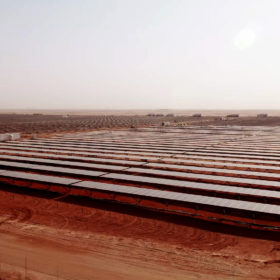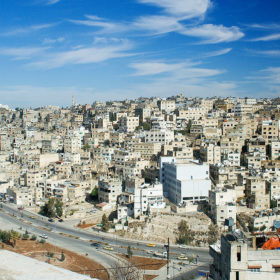EBRD helps Ukraine switch to auctions
The European Bank for Reconstruction and Development is seeking consultants to support Ukrainian authorities in setting new renewable energy targets and to give advice on how to shape the procurement process for large-scale renewables projects.
First EBRD-financed slice of Benban project comes online
The 30 MW plant was developed by a consortium led by Infinity Solar Energy SAE – an Egyptian developer operating in Africa and the Middle East – with Germay’s ib vogt, investment vehicle MMID and private equity firm BPE Partners.
100 MW Saran solar park commissioned in Kazakhstan
The SES Saran solar project is in the Karaganda region. The project was financed by the European Bank for Reconstruction and Development and built by German developer Goldbeck.
EBRD turns to carbon pricing for future project assessments
The European development bank will amend its methodology to determine the financial viability of energy projects. Putting a price on the environmental and societal effects of air pollution, the EBRD is likely to funnel more funds into renewables.
First private PPA for utility-scale solar in Egypt is signed
The 25-year agreement relates to a 6 MW solar plant that will meet up to 4% of the electricity demand of a facility owned by the Arabian Cement Company, in Egypt’s Suez governorate. The project is being financed by local bank QNB AlAhli under the EBRD’s Green Economy Program.
EBRD inks loan agreement for 100 MW in Kazakhstan
The European Bank for Reconstruction and Development (EBRD) and Joachim Goldbeck Holding GmbH have joined forces for the construction of a 100 MW in the Karaganda region of Kazakhstan.
Moldova plans to hold RE auctions in 2019 and 2020
The eastern European nation is being assisted by the European Bank for Reconstruction and Development with the creation of tender documentation for renewable energy auctions.
Enerray and Suntech ink contract for supply of 116 MW of modules for Benban
Italian developer Enerray is progressing three PV plants in Egypt’s Benban complex. The modules will be supplied by the Chinese manufacturer
EBRD arranges financing for 50 MW project in Kazakhstan
The European Bank for Reconstruction and Development (EBRD) has announced it will work alongside the Clean Technology Fund and Asian Development Bank to provide a loan for the construction of a 50 MW solar power plant in Kazakhstan’s central Baikonur region.
Jordan Water Authority launches tender process for two PV projects totaling 30 MW
The authority has issued two invitations for the prequalification of two solar projects, with a capacity of 6 MW and 24 MW, respectively, that are planned to be built at two water stations.










